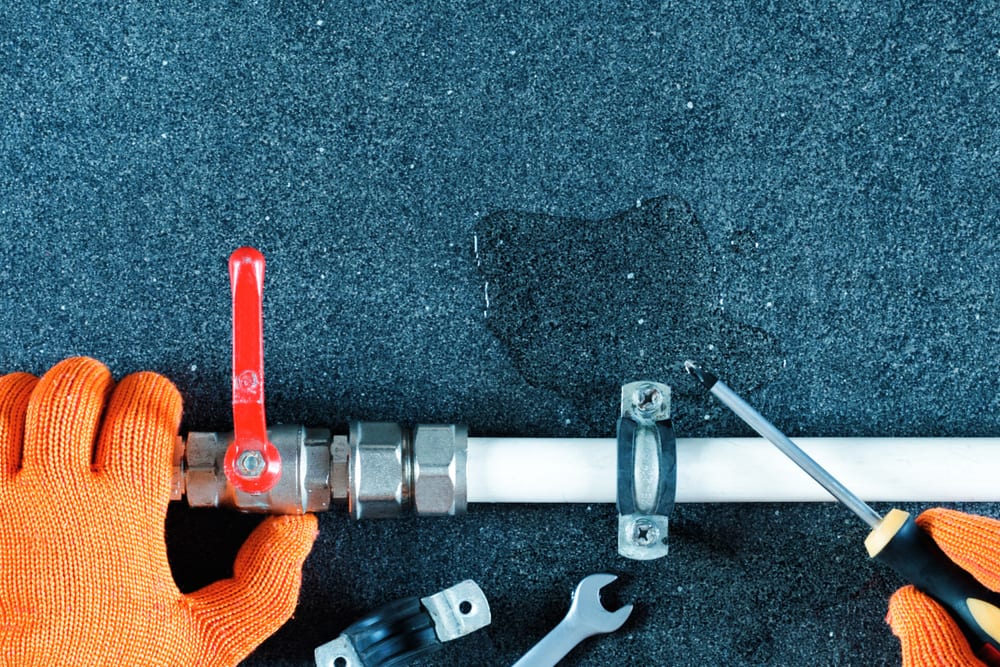Overview To Water Leak Detection At Home
Overview To Water Leak Detection At Home
Blog Article
This article in the next paragraphs in relation to Locating water leaks is unquestionably enlightening. Don't miss out on it.

Early detection of dripping water lines can alleviate a potential calamity. In addition to saving you money, it will certainly reduce the aggravation as well as disappointment. The minute you discover a leakage, calling your plumber for repair services is the best solution. Some tiny water leakages may not be noticeable. Right here are some hacks that help if you can not find it with your nude eyes.
1. Examine the Water Meter
Every home has a water meter. Inspecting it is a surefire manner in which aids you uncover leaks. For starters, turn off all the water sources. Ensure no person will certainly purge, utilize the faucet, shower, run the washing maker or dishwashing machine. From there, go to the meter as well as watch if it will certainly change. Considering that no one is using it, there must be no activities. That indicates a fast-moving leak if it relocates. If you identify no changes, wait an hour or 2 and also examine back again. This indicates you might have a slow leak that might also be underground.
2. Check Water Usage
Analyze your water costs and track your water usage. As the one paying it, you should discover if there are any type of discrepancies. If you detect sudden changes, in spite of your intake being the same, it indicates that you have leakages in your plumbing system. Bear in mind, your water costs need to drop under the exact same variety on a monthly basis. A sudden spike in your bill indicates a fast-moving leak.
A steady rise every month, also with the exact same practices, shows you have a sluggish leak that's also gradually rising. Call a plumber to completely inspect your residential or commercial property, especially if you really feel a warm area on your flooring with piping underneath.
3. Do a Food Coloring Examination
30% comes from commodes when it comes to water intake. Test to see if they are running correctly. Decrease specks of food color in the tank and also wait 10 minutes. There's a leak between the storage tank and dish if the shade somehow infiltrates your dish during that time without flushing.
4. Asses Outside Lines
Don't fail to remember to examine your outdoor water lines as well. Must water permeate out of the link, you have a loosened rubber gasket. One tiny leak can squander heaps of water and also increase your water costs.
5. Inspect and Evaluate the Situation
Home owners should make it a habit to check under the sink counters and even inside cabinets for any bad odor or mold and mildew development. These 2 warnings show a leakage so punctual focus is needed. Doing routine assessments, even bi-annually, can save you from a major trouble.
Examine for stainings and damaging as a lot of devices as well as pipelines have a life span. If you believe leaking water lines in your plumbing system, do not wait for it to intensify.
Early detection of dripping water lines can mitigate a possible disaster. Some little water leaks might not be visible. Inspecting it is a surefire method that aids you discover leakages. One tiny leak can lose tons of water as well as increase your water bill.
If you presume dripping water lines in your plumbing system, don't wait for it to intensify.
WARNING SIGNS OF WATER LEAKAGE BEHIND THE WALL
PERSISTENT MUSTY ODORS
As water slowly drips from a leaky pipe inside the wall, flooring and sheetrock stay damp and develop an odor similar to wet cardboard. It generates a musty smell that can help you find hidden leaks.
MOLD IN UNUSUAL AREAS
Mold usually grows in wet areas like kitchens, baths and laundry rooms. If you spot the stuff on walls or baseboards in other rooms of the house, it’s a good indicator of undetected water leaks.
STAINS THAT GROW
When mold thrives around a leaky pipe, it sometimes takes hold on the inside surface of the affected wall. A growing stain on otherwise clean sheetrock is often your sign of a hidden plumbing problem.
PEELING OR BUBBLING WALLPAPER / PAINT
This clue is easy to miss in rooms that don’t get much use. When you see wallpaper separating along seams or paint bubbling or flaking off the wall, blame sheetrock that stays wet because of an undetected leak.
BUCKLED CEILINGS AND STAINED FLOORS
If ceilings or floors in bathrooms, kitchens or laundry areas develop structural problems, don’t rule out constant damp inside the walls. Wet sheetrock can affect adjacent framing, flooring and ceilings.
https://www.servicemasterbyzaba.com/blog/how-to-detect-water-leakage-in-walls/

I'm very focused on Detecting hidden plumbing leaks and I hope you appreciated the entire blog entry. Do you know about another person who is fascinated about the topic? Do not hesitate to promote it. I value reading our article about Top leak detection hacks.
Report this page